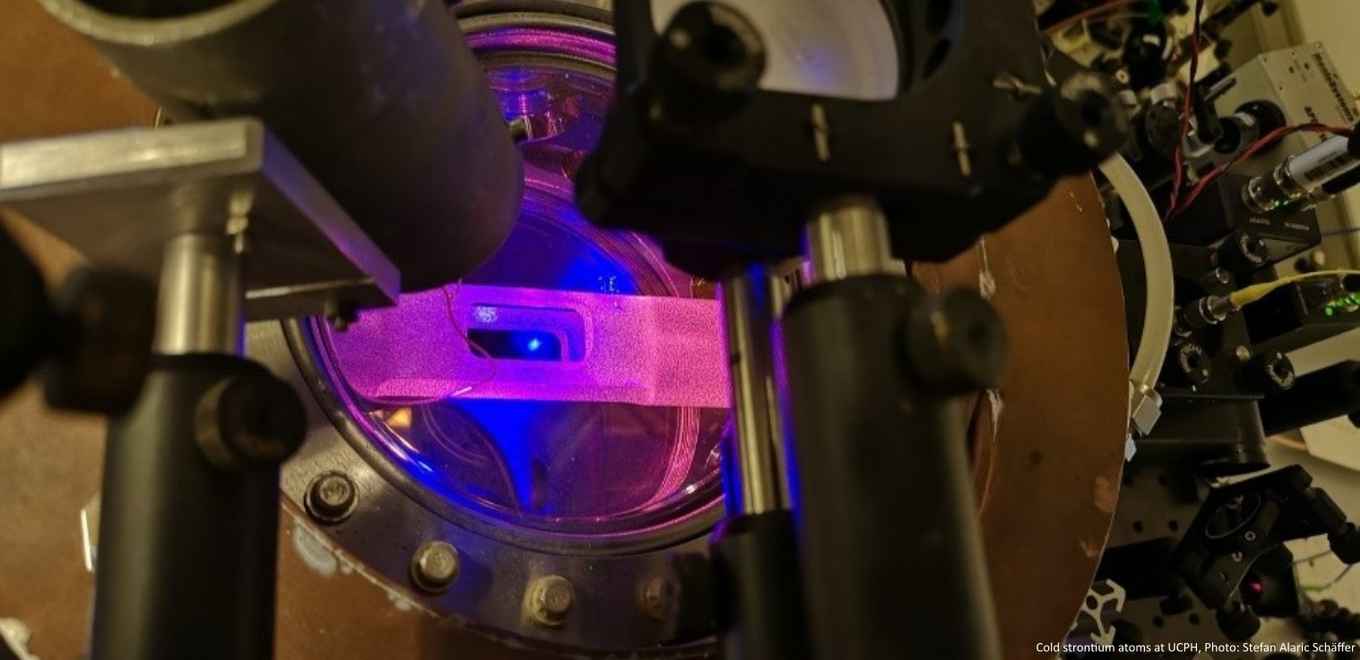QuRIOUS: a new doctoral programme on optical quantum clocks
10 July 2025

Unprecedented precision
Optical clocks are the most precise clocks in the world. Building on the principles of the atomic clocks that were first built in the middle of the 20th century, these clocks use the fundamental principles of quantum mechanics to determine time with accuracies of up to one part in a quintillion (a million million million). This means that such clocks would be off by less than a second over the entire age of the universe.
This unprecedented precision opens up tremendous opportunities, ranging from fundamental science to applications in sensing (for geodesy, for example), reliable and accurate positioning, navigation, and of course timing. For example, deploying these clocks in telecom networks could avoid damage to the economy through outages of fragile satellite navigation systems, on which around 10% of Europe’s gross domestic product depends.
For all these reasons, optical clocks are becoming more and more relevant in many branches of industry. In total, the market for quantum devices is estimated to reach three billion euros by 2030, with quantum clocks covering around 40% of the quantum sensing market.
Training experts
Florian Schreck (University of Amsterdam), coordinator of the QuRIOUS network, says: “With the role of optical clocks expected to grow even more over the next years and decades, training scientists who can work with these clocks and further develop them is crucial. Over the next five years, our programme will train 15 young scientists to become Europe’s future quantum technology leaders. To do so, the network brings together an outstanding and experienced group of scientists and innovators from academia, EU metrology institutes and industry, with world class expertise in practical quantum technologies.”
The new doctoral students will be trained at the universities of Amsterdam, Birmingham, Copenhagen, Toruń, Vienna and Innsbruck, and at the National Center for Scientific Research in France (CNRS – in Paris, Villetaneuse and Besançon) and the National Metrology Institute of Italy; in close collaboration with the industry partners Menlo Systems (Germany), NKT Photonics (Denmark), and QUBIG (Germany). Eleven further associated partners throughout Europe are also involved in the training network.
QuRIOUS continues several earlier initiatives on optical clocks that were also supported by the European Commission; in particular the MoSaiQC training network that is currently training 16 doctoral students on optical atomic clocks, as well as the iqClock research collaboration and its successor, AQuRA, aimed at making optical quantum clocks ready for use in industry.
QuRIOUS partner institutes:
University of Amsterdam
University of Birmingham
Centre National de la Recherche Scientifique
University of Copenhagen
National Metrology Institute of Italy
Nicolaus Copernicus University Toruń
Technische Universität Wien
University of Innsbruck
Menlo Systems
NKT Photonics
QUBIG
Associated partners:
Physikalisch-Technische Bundesanstalt
ICFO – The Institute of Photonic Sciences
Humboldt University of Berlin
University Bourgogne Franche-Comté
Sorbonne Paris Nord University
Politecnico di Torino
Observatoire de Paris
Hertz, Training for Scientists
Metamorphic Additive Manufacturing
Qruise
Vexlum